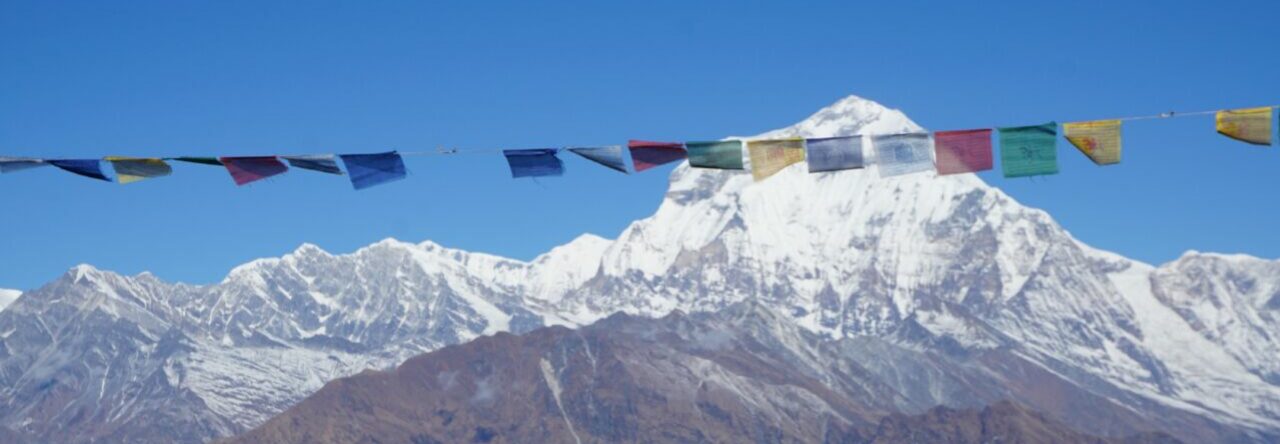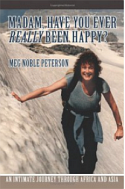This has been a whirlwind week! I visited the Spituk Monastery, taking a local bus, which dropped me off in a lonely area at the foot of a cliff. I took a long walk up a winding road to this formidable monastery perched on yet another hill and overlooking the Indus Valley. (I don’t know how they build these multi-storied edifices in such precarious places). It was built in the 15th century on the site of an 11th century temple. Unfortunately, nobody seemed to be there, so I missed the icons, thangkas, antique arms, and ancient masks, but that didn’t keep me from wandering around old hallways, up massive stone stairways, and into courtyards where the main chapels were locked. It was fun, however, to see the Hindu Mahakali Temple that was several hundred feet above the monastery, containing the shrine of Vajnabhairava. There were dozens of bottles of oil in the entry (for lamps, no doubt), and two massive figures behind the altar that had multiple arms and legs. The masks on the wall were ferocious. I decided to behave myself from now on!
It was a mini-adventure getting home, since I was waiting for the bus where it dropped me off in the parched desert, until two workmen informed me that the bus stopped on a different road from the one where it dropped me off. People are so nice when they see a foreigner broiling in the sun and looking hopeless. Julley! Julley! OK, OK, they reply. laughing.
I bumped into Karin and Marco (from our Nubra Valley trip) on the way home and returned to a new favorite restaurant in the middle of town, Summer Harvest, for a farewell meal with them. We even shared a light Indian beer, my first alcohol in Ladakh, which was so weak it didn’t even affect my elbows. Later on we enjoyed walking the almost abandoned streets back to Changspa, occasionally using my headlamp, which, Saints Preserve Us, I haven’t yet lost.
Planting season is still in full sway here in Changspa, and every morning Aunt Sonam and Grandma are out in the fields planting onions and weeding the crops. Dawa says that they have enough onions from last year to feed the whole neighborhood, but Grandma insists on planting more. She can’t wait to get her hands in the dirt and works tirelessly until dusk. I love to see her, after a day’s work, turning her prayer wheel slowly and chanting from the ancient script, which is wrapped in cloth in the family room and only used for these occasions. This kind of life is what keeps these older people vital and feeling useful. They are needed and they have their specific roll in the family. And they are definitely revered. Now the barley has been sown and the irrigation begins. It’s such a beautiful sight to see the rows of freshly turned earth and the grid of squares made of dirt ridges around each different vegetable. A riot of green, gold, and brown with flowering trees and tall thin poplars around the edge. High mud-brick walls, and that sun every day–cold in the morning, hot at noon, and brisk at sunset.
James Wilson finally arrived on the 26th and we have done non-stop exploring ever since. I thought I had seen it all, but hadn’t gone on the Heritage Walk, or past Leh Palace up the hill above Leh to the Tsemo Tower and Chapel. I vowed I would NOT climb up to the Palace, again, from the inimitable back alleys, but this time we explored around it to the small stupa, and went up a steep dirt path to the tower high above. It was dizzying for me, for I’m not a big fan of exposure, but James loves to goad me on and especially if the walk along the cliff is narrow. Do all men thrive on scaring women? Well, I figure that if you don’t keep pushing yourself and let fear drive you, you might as well sit in the rocking chair and be done with it. Since I don’t have a rocking chair, I elect to push the limits. Mine, at least.
Nobody would believe what lies behind the small mosque in the center of Leh. Our wanderings led through a labyrinth of streets, part of the old city wall in the bread-making district, through tunnels of stone and a series of walkways, wooded paths, and old farms around a rushing stream that can only be forded by hopping from stone to stone. (The bridge washed out and hasn’t been replaced.) There were houses built in high places where you couldn’t imagine anyone getting to them, and new guest houses going up near them. We watched a chapatti maker, something I have never done, as he slapped the flattened and scored dough onto the sides of a round sunken oven, removing it when it started to crinkle and get brown. How he kept from burning his hand was amazing. And so was the chapatti we bought.
One afternoon we had a special treat. Rinchin, the eldest daughter at the Goba, and her sister, Lazes, took us to her old family home, which her great grandfather had built years ago. He was a very respected member of the community–a hunter, a farmer, and the father of seven children. This is where Great Aunt Sonam (only 67) still lives in a single room. We found the stone house off an alley not far from the present guest house, and headed up dark, narrow steps to explore the small rooms and hear the history of the family. It was fascinating, as were the special murals on the wall, each with its own story, which Rinchin has promised to tell me. There was such delight as the two girls explored the roof with its homemade prayer wheels, showed us the old kitchen with utensils still in place and real stone pots piled high, the tool room, and a living/sleeping area she had visited so often as a child and listened to the stories of her elders. They reminisced about running from roof to roof as children. That’s how close together the houses were. There were several wooden pillars, some finely decorated, that divided the sleeping from the living area. Rinchin tried on old traditional hats, showed us a sacred cock’s egg wrapped in tissue paper, and rummaged through two trunks made of yak skin and wood. And one of leopard skin. This is the experience every child has when going to “Grandma’s attic,” and we were thrilled to be a part of it. At 6 Auntie returned and insisted on making us tea, a process that is long and meticulous–boiling this and boiling that and straining the leaves–but results in the best milk tea I’ve ever had. These are the moments that make Ladakh live for me. It has such a rich culture and history and I’ve been blessed with finding such warm, open people willing to share it with me.
At the last minute I decided to return for two days to the Nubra Valley with James, Karin Skogstad, and a new friend from Holland, Anna Hendrix, an interesting young doctor with whom we’d had many conversations at the Goba. This seemed a bit crazy, but I found that seeing this natural wonder for the second time gave me another perspective on it. I hadn’t noticed the wild variety of carved sand dunes before, or the marmots or pashmina goats. And the wild roses and other foliage were now in full bloom. The first ride over the Khardung La at 18,380 ft. was in sunshine and, although cold, nothing like the second day when we returned in a white out, which turned into a blizzard at the pass. Nobody was there. The military station seemed locked up and there wasn’t a single car in sight. But it was quite an adventure, with so many trucks on the road, lugging crates of produce and trying to pass on the narrow, high roads. During the storm, two trucks got locked together and it took several tries to get them unhooked without sending one of them into the valley 1,000 ft. below. The banks of snow and ice were much higher than two weeks ago, and the road seemed to have more potholes filled with water and ice. It was exciting to go from one type of landscape to another and one temperature to another. We explored another couple of remote stupas as well as Disket and Hunder monasteries. And we did more walking around the guest house. In the morning I came upon a small two-humped camel, running in front of a school bus, that mercifully pulled over. The little fellow stopped to feed on a tree, and along came the camel driver with three adult camels. I said, “I think you’ve lost a camel.” He shook his head. “He’ll come along.” And sure enough, as the driver went further away, the little guy took off, legs splaying, huge feet beating the dust, until he had caught up. The driver offered me a short ride, which I took, and which I feel I don’t need to do again. Two humps. Now, that’s an experience!
James and I will be leaving tomorrow for five days of trekking, starting at Likir Monastery and ending at the famous Alchi and Lamayuru monasteries. We’ll be going with Stanzin Lhawang and even have two donkeys to carry our “stuff,” so unlike my other treks where we had porters. During this time I shall celebrate my birthday. You will get a full report!

